Bold brush strokes and soft washes can turn blank paper into creative art. Watercolour painting is a simple way for everyone to explore art, from landscapes and flowers to shapes and animals. Watercolour painting ideas help artists of any level get inspired and start creating right away.
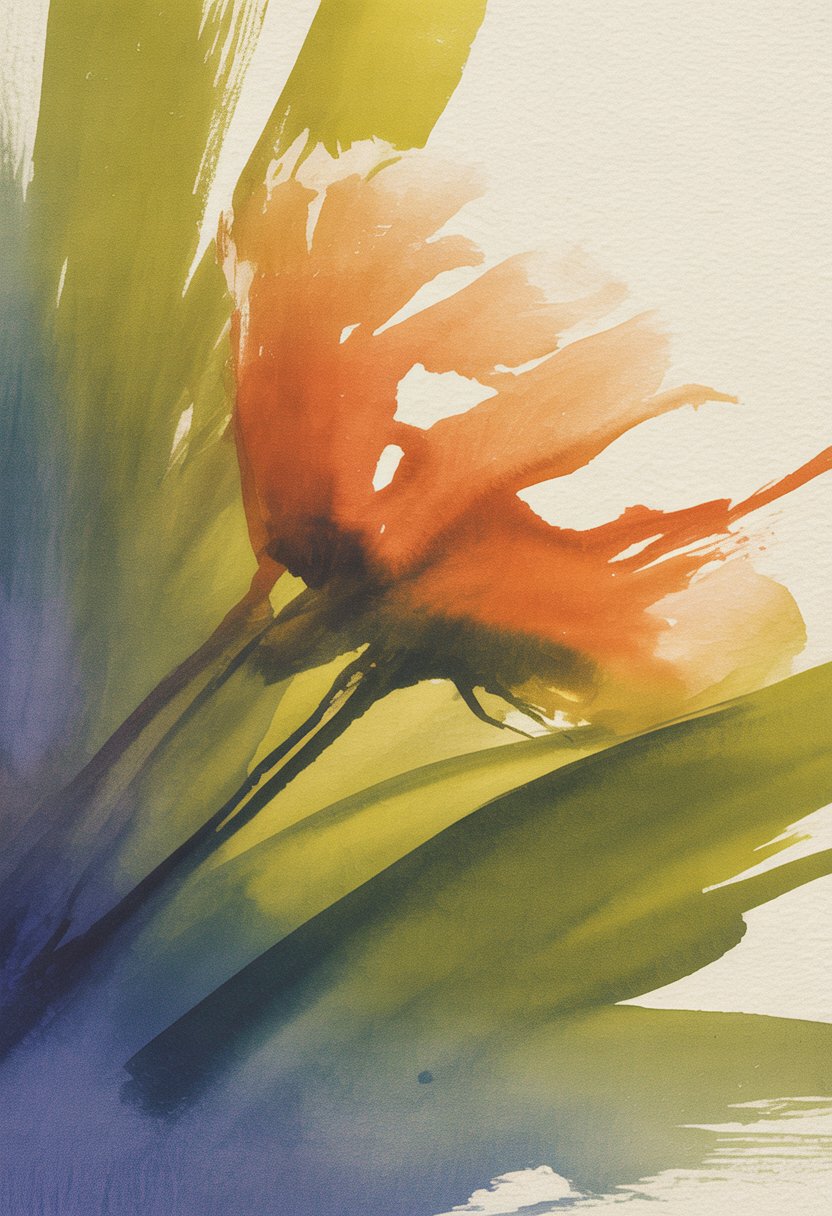
People can find ideas that match their interests or challenge their skills. Common topics include colourful skies, nature scenes, and easy geometric patterns. For more tips and inspiration, there are lists of watercolour painting ideas for beginners and advanced painters as well as easy and fun concepts for all skill levels.
Exploring new painting ideas keeps the process exciting and helps build skills over time. With a little practice, anyone can discover their own style and enjoy creative moments with just paper, water, and paint.
Watercolour Painting Ideas for Every Artist
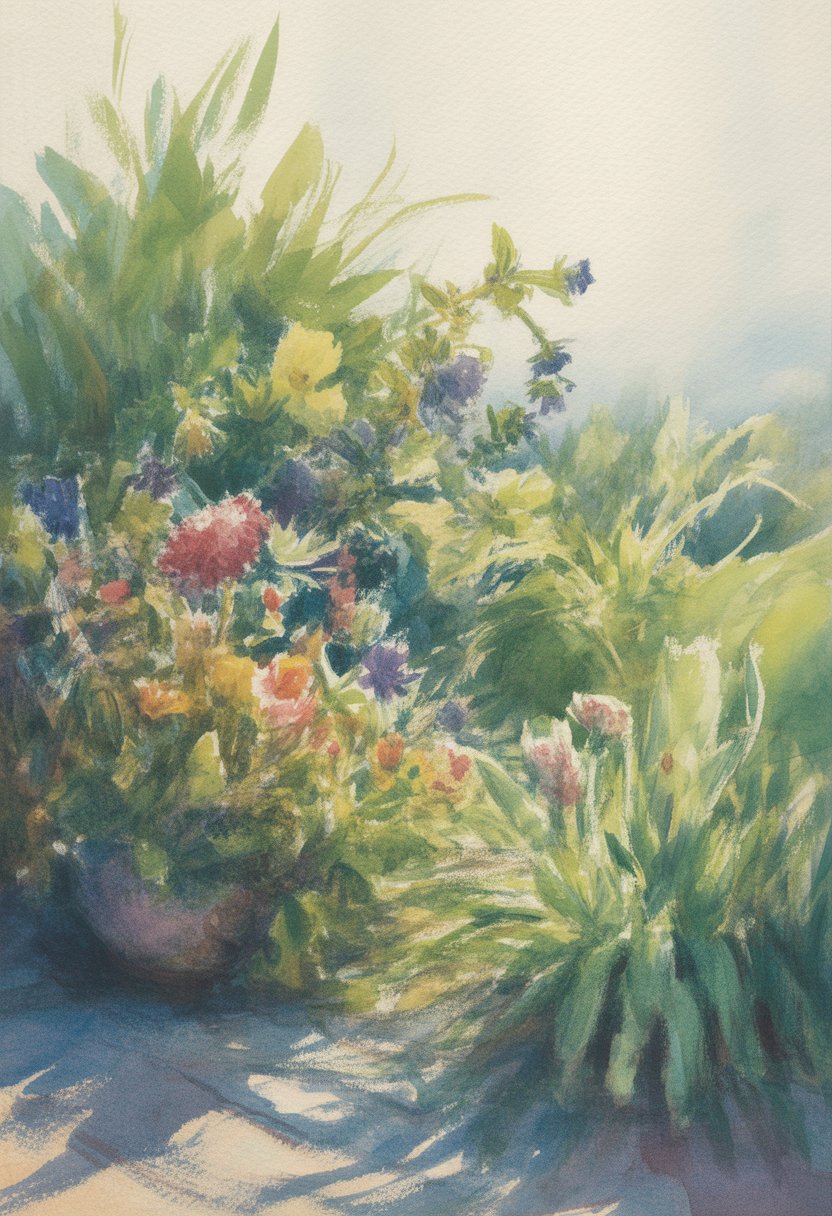
Watercolor painting offers many choices, from simple shapes to complex landscapes. Each artist can find ideas that match their skill level, interests, and the season.
Beginner-Friendly Watercolour Projects
For those new to watercolor painting, starting with easy subjects helps build confidence. Simple projects include painting sunsets, trees, and basic flowers. These subjects allow beginners to practice techniques like washes, gradients, and layering.
Another popular idea is to paint every day objects, such as mugs, leaves, or fruit. Practice with these can help improve detail and brush control. Painting small scenes, like mountains or lakes, teaches blending and shading.
Many beginners enjoy step-by-step YouTube tutorials with guided instructions. Lists or art prompts found online also offer variety without being overwhelming.
Themed Watercolour Inspiration
Watercolor painting ideas can also follow a theme, making the experience creative and personal. Artists might choose to paint animals, city skylines, or even food items. This helps focus creativity and improves specific skills, such as capturing textures or working with vibrant colors.
Nature themes, such as flowers, forests, and birds, encourage artists to explore shapes and layering. Abstract patterns, geometric designs, and galaxies push creativity further while also teaching technique. Those who enjoy storytelling can try painting storybook scenes, comic illustrations, or fantasy landscapes.
A great way to get inspired is to look through lists of ideas that suggest new themes or challenges each week. Experimenting with different topics helps an artist discover their favorite styles.
Seasonal and Festive Ideas
Painting with the seasons or for holidays adds a meaningful twist to watercolor projects. In spring, flowers, rain scenes, and fresh greenery are popular subjects. Summer brings ideas like beaches, sunsets, and fruit.
Autumn watercolor painting often features pumpkins, falling leaves, or cozy scenes. Winter inspires snow landscapes, trees, and festive decorations. Holidays provide extra variety—from Halloween pumpkins to Christmas ornaments and New Year’s fireworks.
A table of seasonal ideas is helpful:
| Season | Painting Ideas |
|---|---|
| Spring | Flowers, rain, butterflies |
| Summer | Beaches, sunsets, watermelon |
| Autumn | Leaves, pumpkins, cozy cabins |
| Winter | Snow, pine trees, ornaments |
Artists can keep projects fresh by matching their paintings to the time of year or an upcoming celebration. This keeps the process engaging and creative, especially for those who want new ideas throughout the year.
Essential Watercolour Techniques
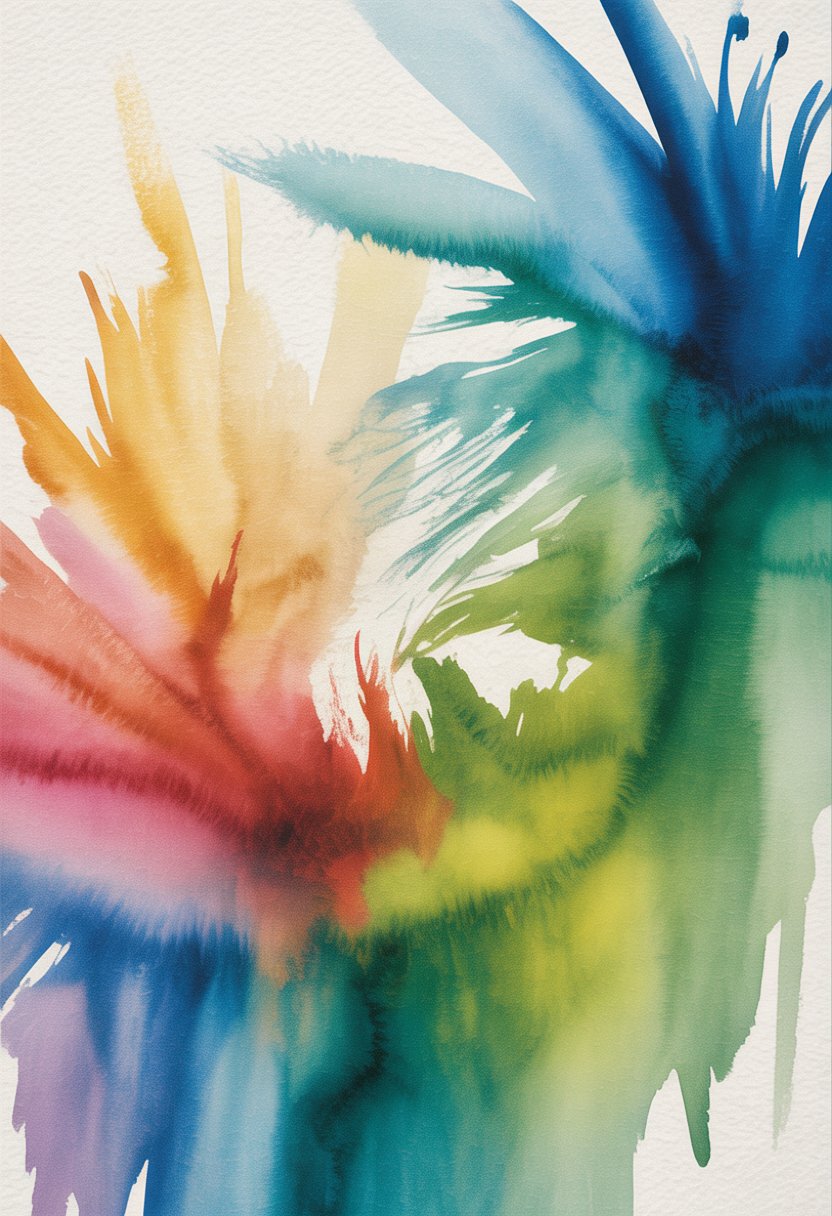
Mastering watercolour painting means learning a range of techniques to control how water, pigment, and paper interact. Key methods include laying smooth washes, blending colors, and building detail with careful layering.
Foundational Techniques for Beginners
Beginners should start with basic skills such as flat washes, graded washes, and color mixing. Flat washes involve covering the paper with a single, even color. This creates smooth backgrounds and is the base for many paintings. With a graded wash, the artist fades a color from dark to light, often used for skies or backgrounds.
Dry brush is another essential skill. Here, a slightly damp brush and minimal paint create rough, textured strokes. This technique works well for adding grass, fur, or bark.
Simple blending helps merge two colors where they meet on the page. Practicing these foundational methods will give artists the control needed for more advanced watercolor techniques.
Wet-on-Wet Versus Wet-on-Dry Applications
In wet-on-wet painting, artists apply wet paint onto damp paper. This causes colors to spread and mix, giving a soft, blurry edge. Wet-on-wet is often used for skies, backgrounds, or natural effects like clouds and water.
Wet-on-dry, in contrast, means painting with wet paint onto dry paper. This gives sharper lines and more controlled shapes, perfect for details and clean edges.
The choice between these methods changes the painting’s mood and style. Wet-on-wet creates smooth blends and unexpected textures, while wet-on-dry allows for crisp lines and layering. Both techniques let artists experiment with the unique properties of watercolor paints, leading to a variety of creative effects.
Layering and Glazing Methods
Layering is the process of painting one layer of color, letting it dry completely, and then painting additional layers on top. It allows artists to build up depth, form, and shadow without muddying colors. This method is useful for capturing complex shapes like leaves, petals, or shadows.
Glazing involves applying thin, transparent layers of diluted paint over dry layers to change or enhance the colors below. Each glaze lets light pass through for a luminous effect. Artists use glazing to adjust the tone, add richness, or gently transition between shades.
Understanding both layering and glazing helps painters achieve realistic lighting and subtle color shifts in their watercolor painting. More advice about layering and glazing can guide artists to add complexity to their artwork.
Creative Approaches to Abstract Watercolour
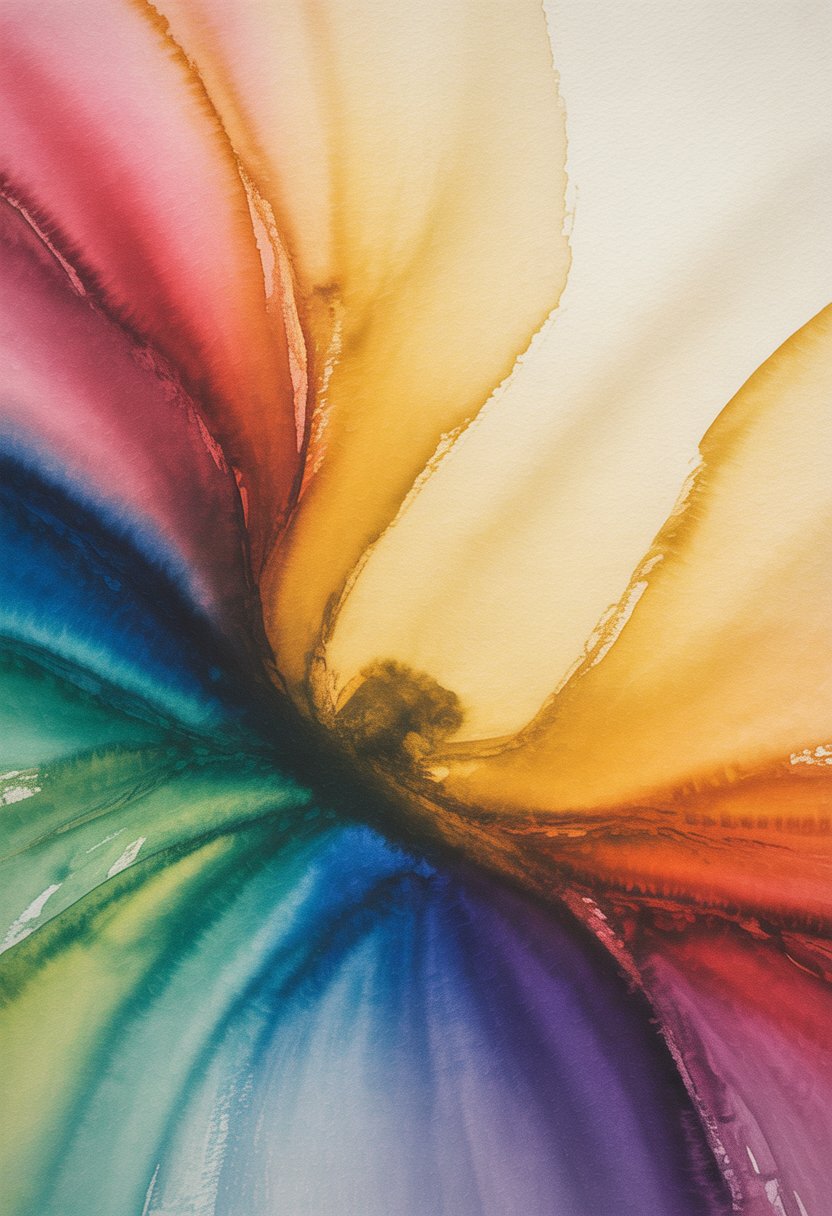
Artists can create abstract watercolor paintings using expressive or minimalist styles. Each approach offers unique techniques, tools, and ideas to help painters find inspiration and develop their creative voice.
Expressive Abstract Styles
Expressive abstract watercolor often uses bold colors, energetic brush strokes, and freeform shapes. This style lets the painter show emotion by blending and layering colors, allowing paints to bleed and mix on the paper.
Popular techniques include wet-on-wet painting, where water is brushed over the paper before pigment is applied. This creates soft, flowing effects and interesting textures. Many artists use salt, plastic wrap, or sponges to add extra detail and movement to their artwork.
Bright color palettes often help capture attention and communicate feeling. Painters sometimes contrast warm and cool tones or experiment with high saturation. Using a wide range of marks, like dabs, swirls, and slashes, can result in dynamic and lively pieces. For more techniques and inspiration, see these vibrant watercolor ideas and creative abstract painting ideas.
Minimalist Watercolour Abstractions
Minimalist abstract watercolor relies on simple shapes, limited colors, and lots of open space. The focus is on arrangement and restraint, often using only a few brushstrokes to create a balanced composition.
Common subjects are circles, lines, and color blocks. Artists may use a monochrome palette or two to three soft colors to keep the painting calm and refined. The white of the paper is left untouched in many places, adding light and air to the artwork.
This style works well for beginners and anyone who prefers a clean and subtle look. Clean edges and clear shapes are key. A flat watercolor brush is a useful tool for making straight, simple lines and geometric forms. For more ideas, check out these minimalist abstract watercolor projects and easy painting methods.
Nature and Still Life Watercolour Ideas
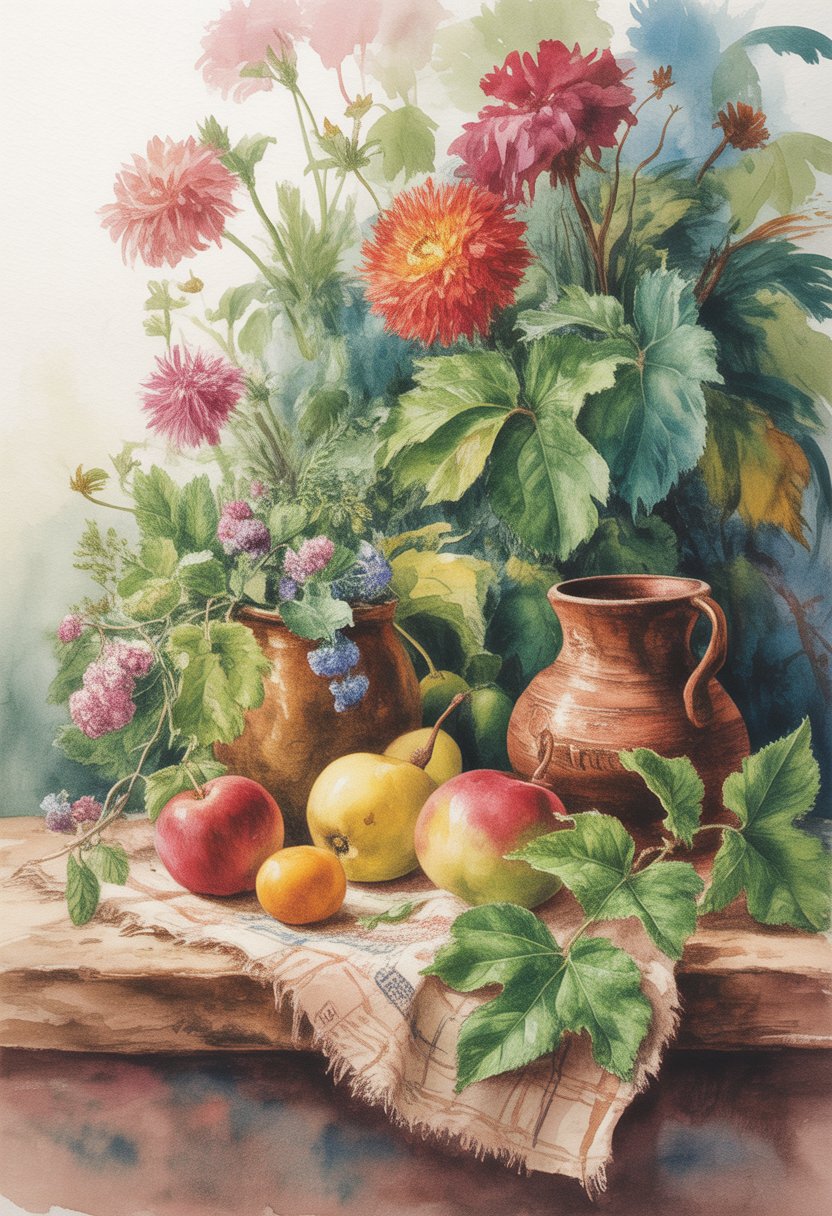
Nature and everyday items offer many watercolor painting ideas for both new and skilled artists. These themes encourage close observation, build painting skills, and use a range of colors and textures.
Floral and Botanical Subjects
Flowers and plants remain popular choices for watercolor painting. Artists can start with simple flowers like daisies or tulips, which have straightforward shapes and clear color regions. More complex arrangements, such as wildflower bouquets or indoor potted plants, allow for layering washes and working with subtle color changes.
Botanical painting often highlights the details of leaves, petals, and stems. Using a wet-on-wet technique, artists can create soft gradients and blend natural colors, making petals look delicate. Dry brush techniques also help capture the crisp edges and vein patterns on leaves.
Many watercolorists also paint herbs, succulents, or even branches with berries. This subject lets painters practice light and shadow, since the shape and texture of each plant part can make a big difference in the painting. For inspiration, see lists of nature watercolor painting ideas and botanical examples.
Landscapes and Seascapes
Watercolor landscapes and seascapes explore wide spaces, sky, and natural light. Beginners often start with simple hills, mountains, or a field with a few trees. Painting seascapes allows artists to practice blending blues for the sky and sea, and to capture reflections and gentle waves using wet technique.
Creating depth is important; painters use lighter washes for far-off mountains and darker tones for objects in the foreground. Many artists also try painting sunsets, cloudy skies, or foggy mornings to practice different lighting effects. Adding small details like birds, boats, or distant houses provides focus.
Seascapes may include sandy beaches or rocky shores. Each part uses a different brushstroke: smooth for water, stippled or textured for land. For a wide range of ideas, review watercolor landscape painting ideas.
Fruit and Everyday Objects
Still life painting includes fruit, kitchen items, or ordinary objects like mugs or teapots. Painting fruit, such as apples, lemons, or grapes, helps artists study light, shadow, and texture. The simple round shapes make it easier to practice layering colors and building up transparent glazes.
Everyday objects can add personal meaning to a painting. For beginners, a small arrangement of pears, cups, or a simple breakfast table works well. Artists can group items to form interesting shapes and shadows, using different materials like glass, metal, or ceramic.
A table below lists possible still life ideas:
| Subject | Skills Practiced |
|---|---|
| Apples, pears | Layering color, highlights |
| Glass jars | Reflections, transparency |
| Kitchen utensils | Metallic shine, contours |
| Flower vases | Combining objects and textures |
Collections of still life watercolor ideas show how artists experiment with these subjects. This supports creativity and helps develop new watercolor painting techniques.
Modern and Decorative Uses for Watercolours
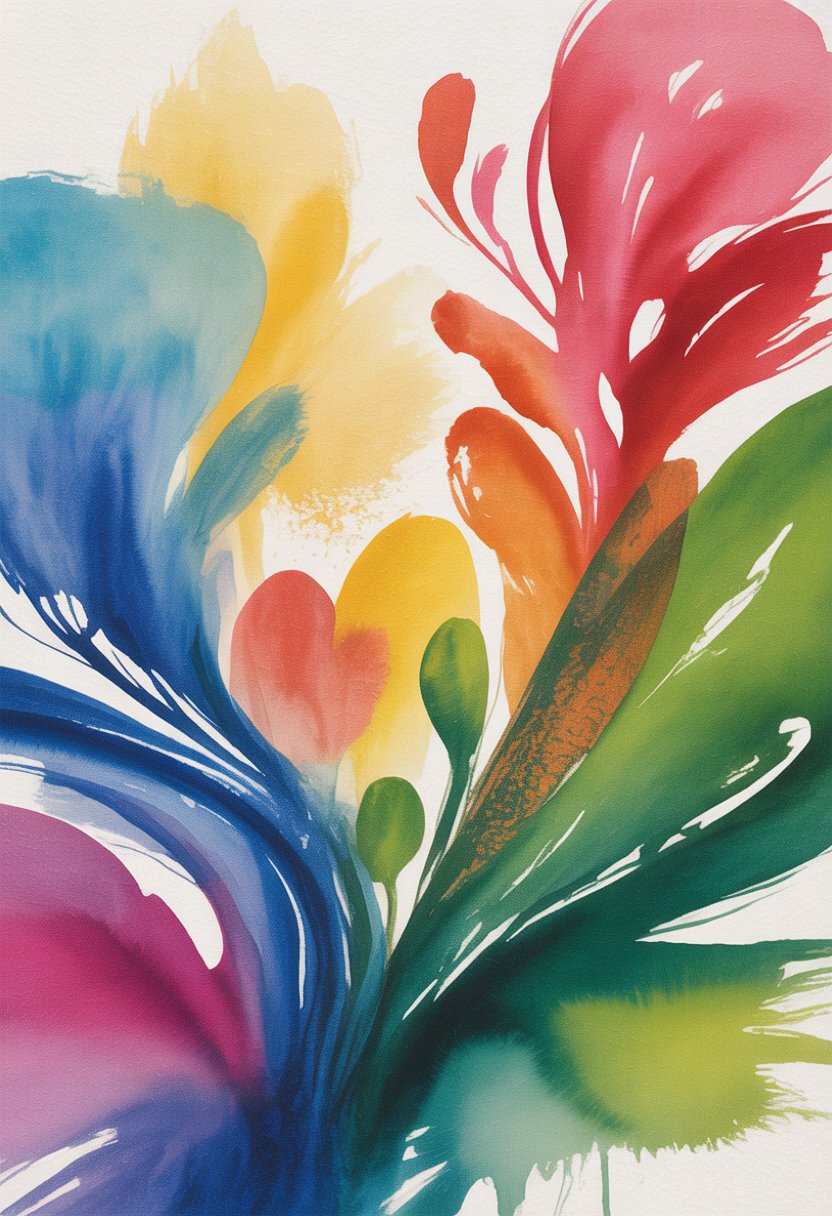
Watercolor painting can be both functional and stylish. Many people use watercolors for making personal gifts, unique home décor, and custom art accents in daily life.
Watercolour Bookmarks and Cards
Hand-painted bookmarks and cards have become a popular choice for gifting and personal use. These small art pieces let artists experiment with color blends, patterns, and simple motifs like leaves, florals, or geometric shapes.
Bookmarks made with watercolor are not only useful, but they look beautiful in any book. Some artists add calligraphy or inspirational quotes along the edges for a personalized touch. Thick watercolor paper works best, as it keeps the paper from warping or curling.
Greeting cards can feature seasonal themes, abstract designs, or even landscapes. Layering transparent washes and using salt or splatter effects bring extra interest to these cards. If laminated or sealed, both bookmarks and cards become more durable and last longer.
Making cards and bookmarks with watercolors is cost-efficient and can be done in small spaces. People often create sets for craft fairs, gifts, or party favors. More ideas can be found in lists like these watercolor painting ideas.
Contemporary Home Décor Projects
Watercolour painting fits modern home décor trends by adding soft color or abstract styles to living spaces. Large wall art pieces using loose, atmospheric washes or minimalistic botanical designs are popular for living rooms and offices.
People frame watercolor prints, create gallery walls, or display original art as statement pieces. Some use watercolor to customize items such as lampshades, coasters, or cloth napkins. Soft backgrounds with bolder detail work are especially trendy for decorative prints.
Table runners, wall hangings, and ceramic pieces can also feature watercolor motifs. Artists sometimes digitize their paintings, then print them on canvas or fabric. Inspiration and guides for these types of projects can be seen in modern watercolor art.
Watercolors dry quickly and work well for layering, letting beginners and experienced painters test ideas on paper before moving on to more permanent surfaces. This approach brings a fresh, personal style to home décor.
Frequently Asked Questions
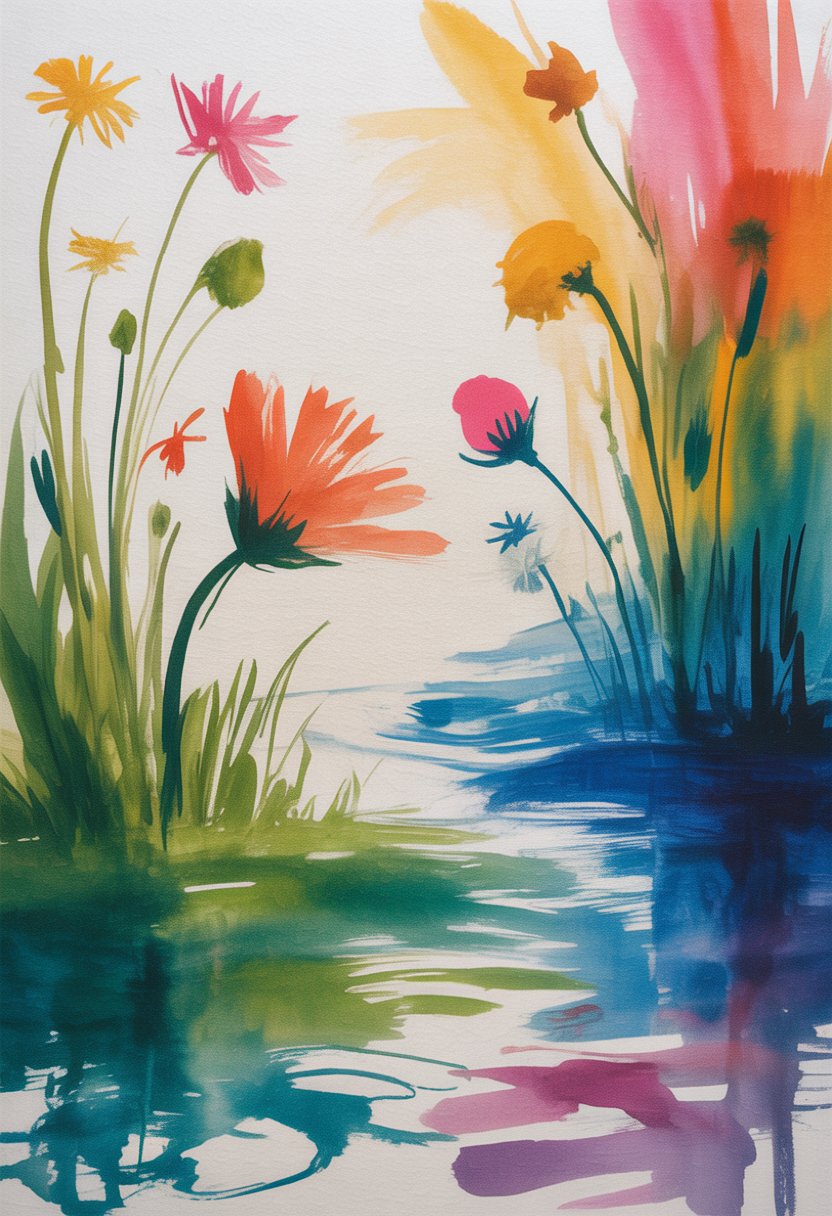
Starting with watercolor painting opens opportunities for experimentation, learning, and developing techniques. Every painter, whether new or experienced, can find projects and ideas that match their skill level and interests.
What are some simple watercolor projects for someone just starting out?
Beginners often enjoy painting basic shapes, fruit, or flowers. Practicing with single subjects like leaves or apples helps build control over water and color blending. Many find that trying floral compositions and simple landscapes is a useful way to get comfortable with techniques.
Can you suggest watercolor painting activities suitable for children?
Children benefit from playful and easy projects like painting rainbows, clouds, or geometric shapes. Using thick brushes and bright colors encourages creativity. Step-by-step guides designed for kids help teach essential skills while keeping the process fun and low-pressure.
What elements make up a good beginner’s watercolor landscape project?
Successful beginner landscape projects often include clear skies, rolling hills, and simple trees or mountains. Limit color choices to prevent confusion and focus on large shapes. Light washes and basic layering practice help new painters understand how to create depth with minimal detail.
How do I advance from basic techniques to more complex watercolor paintings?
To progress, painters can move from basic shapes to combining techniques such as wet-on-wet washes and dry brush effects. Practicing color mixing, shadow, and texture leads to more realistic and dynamic work. Gradually increasing the complexity of subjects, such as painting natural objects and still life compositions, helps develop more advanced skills.
What are some step-by-step watercolor painting guides for beginners?
Beginners can follow easy, step-by-step tutorials that cover basics like brush control, blending, and how to use water-to-paint ratios. These guides break down the process into manageable stages, allowing learners to see progress with each project.
Could you recommend some watercolor ideas that are perfect for adult learners?
Adults often enjoy painting themes like cityscapes, abstract designs, or seasonal views. Projects focusing on floral arrangements, still lifes, or landscapes encourage skillful control and creative exploration. Many also find satisfaction in mixing more sophisticated colors or exploring textured effects for a more personal touch.
